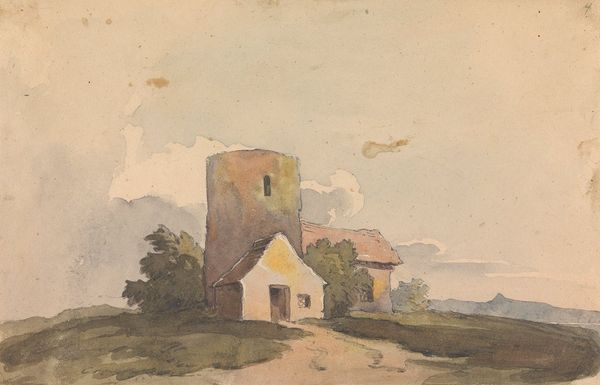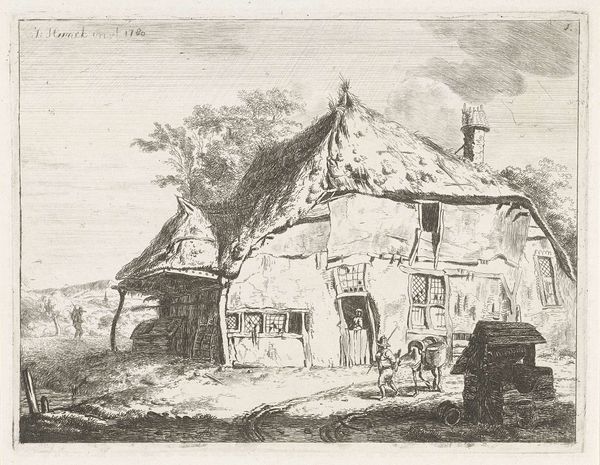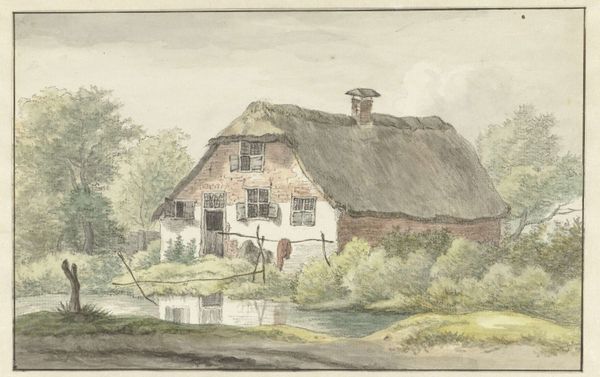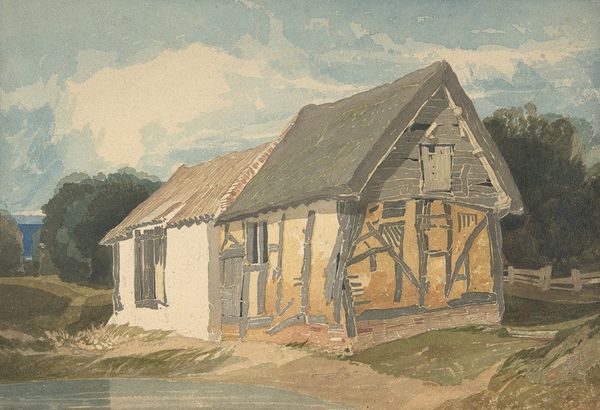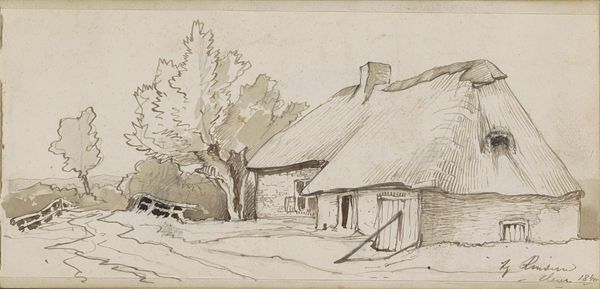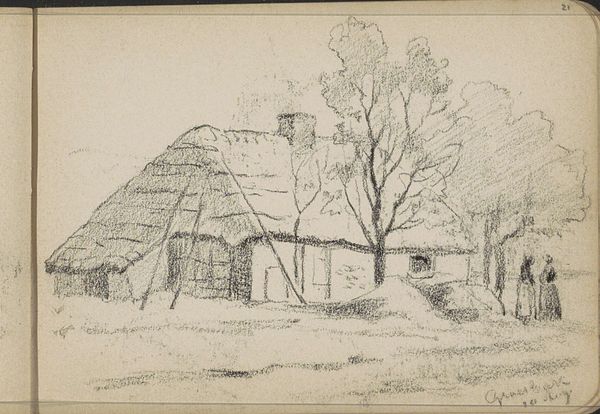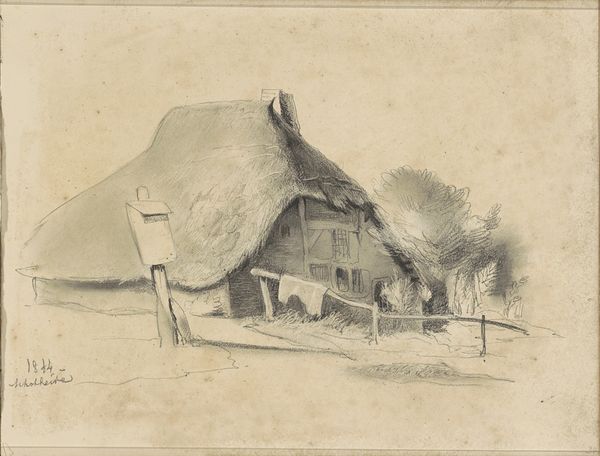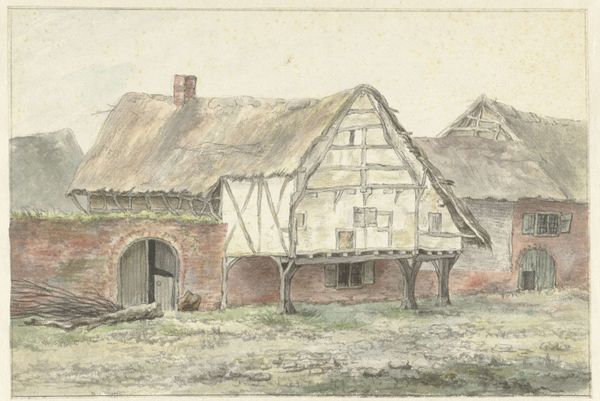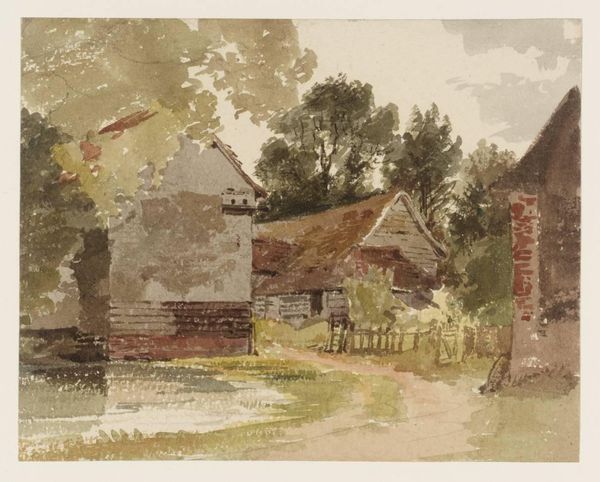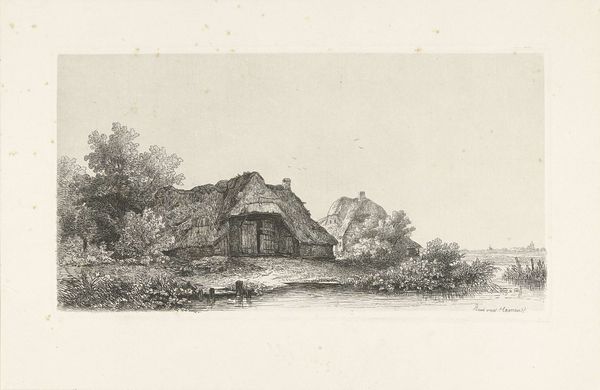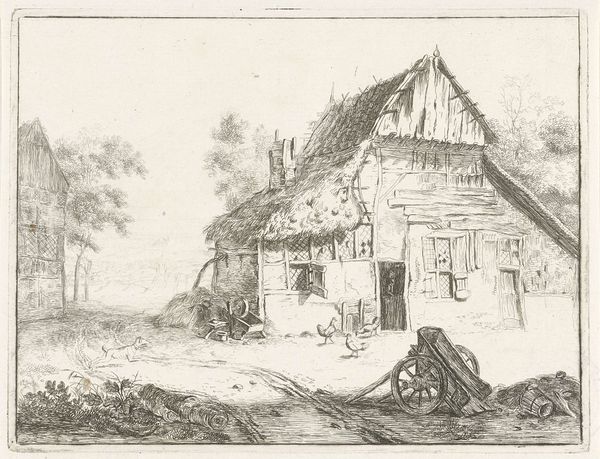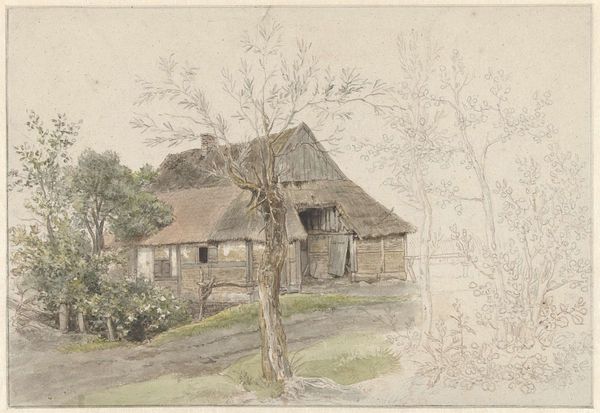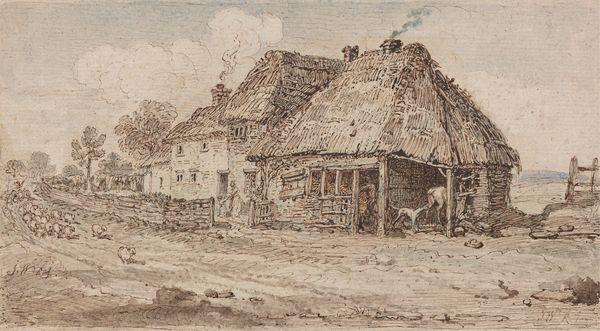
painting, watercolor
#
painting
#
landscape
#
oil painting
#
watercolor
#
genre-painting
#
watercolor
#
realism
Copyright: Public Domain: Artvee
Editor: This is "Cottage," a watercolor painting potentially by Thomas Sully. It presents a very quaint scene, almost dreamlike with its soft edges and muted colors. What do you see in this piece? Curator: I see more than just a simple cottage. I see a romanticized vision of rural life, perhaps a critique of the burgeoning industrialization that was occurring when genre paintings like this gained popularity. Sully might be subtly highlighting the displacement and romanticizing a lifestyle slipping away. Does it offer any social commentary on land ownership or class? How does this ideal cottage relate to broader social and economic shifts? Editor: That's interesting. I hadn't thought about the historical context that way. I was just caught up in the peaceful scene. Is that sense of tranquility intentional or maybe even deceptive? Curator: I believe it is intentional. Artists like Sully often walked a fine line, presenting idealized visions while perhaps hinting at underlying social tensions. The cottage itself becomes a symbol, right? What does “home” signify during this period of immense social change? Is it attainable to everybody? Whose dream of 'home' is privileged and depicted in these bucolic settings, and whose is omitted? These are critical questions we need to consider. Editor: So, beyond the pretty picture, we should also look at what’s *not* being shown? Curator: Precisely! Art always exists within a specific power structure. We must think about its silences, what perspectives it omits. Editor: I will definitely consider those silences. Thanks for your perspective! Curator: It’s crucial to always question what the artist leaves unsaid, who benefits, and at whose expense this rural idyll exists. It is a continuous work to connect Art History to Social Studies.
Comments
No comments
Be the first to comment and join the conversation on the ultimate creative platform.

